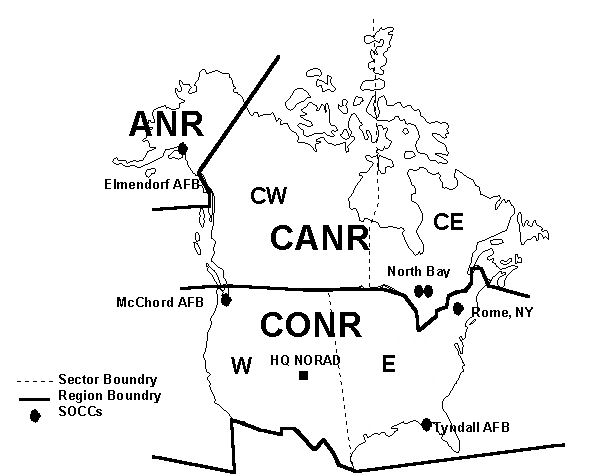|
Kosmos 954
Kosmos 954 () was a reconnaissance satellite launched by the Soviet Union in 1977. A malfunction prevented safe separation of its onboard Nuclear reactor technology, nuclear reactor; when the satellite Atmospheric reentry, reentered the Earth's atmosphere the following year, it scattered radioactive debris over northern Canada, some of the debris landing in the Great Slave Lake next to Fort Resolution, Northwest Territories. This prompted an extensive multiyear cleanup operation known as Operation Morning Light. The Canadian government billed the Soviet Union for over 6 million Canadian dollars under the terms of the Outer Space Treaty, which obligates states for damages caused by their space objects. The USSR eventually paid 3 million Canadian dollars in compensation. Launch and operation The satellite was part of the Soviet Union's RORSAT programme, a series of reconnaissance satellites which observed ocean traffic, including surface vessels and nuclear submarines, using act ... [...More Info...] [...Related Items...] OR: [Wikipedia] [Google] [Baidu] |
Outer Space Treaty
The Outer Space Treaty, formally the Treaty on Principles Governing the Activities of States in the Exploration and Use of Outer Space, including the Moon and Other Celestial Bodies, is a Multilateralism, multilateral treaty that forms the basis of international space law. Negotiated and drafted under the auspices of the United Nations Security Council, United Nations, it was opened for signature in the United States, the United Kingdom, and the Soviet Union on 27 January 1967, entering into force on 10 October 1967. , 116 countries are parties to the treaty—including all major space-faring nations, spacefaring nations—and another 22 are signatories. The Outer Space Treaty was spurred by the development of intercontinental ballistic missiles (ICBMs) in the 1950s, which could reach targets through outer space. The Soviet Union's launch of Sputnik 1, Sputnik, the first artificial satellite, in October 1957, followed by a subsequent arms race with the United States, hastened p ... [...More Info...] [...Related Items...] OR: [Wikipedia] [Google] [Baidu] |
Satellite Catalog Number
The Satellite Catalog Number (SATCAT), also known as NORAD Catalog Number, NORAD ID, USSPACECOM object number, is a sequential nine-digit number assigned by the United States Space Command (USSPACECOM), and previously the North American Aerospace Defense Command (NORAD), in the order of launch or discovery to all artificial objects in the orbits of Earth and those that left Earth's orbit. For example, catalog number 1 is the Sputnik 1 launch vehicle, with the Sputnik 1 satellite having been assigned catalog number 2. Objects that fail to orbit or orbit for a short time are not catalogued. The minimum object size in the catalog is in diameter. , the catalog listed 58,010 objects, including 16,645 satellites that had been launched into orbit since 1957 of which 8,936 were still active. 25,717 of the objects were well tracked while 2,055 were lost. In addition USSPACECOM was also tracking 16,600 analyst objects. Analyst objects are variably tracked and in constant flux, so their ... [...More Info...] [...Related Items...] OR: [Wikipedia] [Google] [Baidu] |
North American Aerospace Defense Command
North American Aerospace Defense Command (NORAD ; , CDAAN), known until March 1981 as the North American Air Defense Command, is a Combined operations, combined organization of the United States and Canada that provides aerospace warning, air sovereignty, and protection for Canada and the continental United States. Headquarters for NORAD and the NORAD/United States Northern Command (USNORTHCOM) center are located at Peterson Space Force Base in El Paso County, Colorado, El Paso County, near Colorado Springs, Colorado. The nearby Cheyenne Mountain Complex has the Alternate Command Center. The Commander of the North American Aerospace Defense Command, NORAD commander and deputy commander are, respectively, a General (United States), United States four-star general or equivalent and a Lieutenant-general (Canada), Canadian lieutenant-general or equivalent. Command NORAD is headed by its Commander of NORAD, commander, who is a Four-star rank, four-star General (United States), ... [...More Info...] [...Related Items...] OR: [Wikipedia] [Google] [Baidu] |
Orbit
In celestial mechanics, an orbit (also known as orbital revolution) is the curved trajectory of an object such as the trajectory of a planet around a star, or of a natural satellite around a planet, or of an artificial satellite around an object or position in space such as a planet, moon, asteroid, or Lagrange point. Normally, orbit refers to a regularly repeating trajectory, although it may also refer to a non-repeating trajectory. To a close approximation, planets and satellites follow elliptic orbits, with the center of mass being orbited at a focal point of the ellipse, as described by Kepler's laws of planetary motion. For most situations, orbital motion is adequately approximated by Newtonian mechanics, which explains gravity as a force obeying an inverse-square law. However, Albert Einstein's general theory of relativity, which accounts for gravity as due to curvature of spacetime, with orbits following geodesics, provides a more accurate calculation and u ... [...More Info...] [...Related Items...] OR: [Wikipedia] [Google] [Baidu] |
Uranium-235
Uranium-235 ( or U-235) is an isotope of uranium making up about 0.72% of natural uranium. Unlike the predominant isotope uranium-238, it is fissile, i.e., it can sustain a nuclear chain reaction. It is the only fissile isotope that exists in nature as a primordial nuclide. Uranium-235 has a half-life of 703.8 million years. It was discovered in 1935 by Arthur Jeffrey Dempster. Its fission cross section for slow thermal neutrons is about Barn (unit), barns. For fast neutrons it is on the order of 1 barn. Most neutron absorptions induce fission, though a minority (about 15%) result in the formation of uranium-236. Fission properties The fission of one atom of uranium-235 releases () inside the reactor. That corresponds to 19.54 TJ/mole (unit), mol, or 83.14 TJ/kg. [...More Info...] [...Related Items...] OR: [Wikipedia] [Google] [Baidu] |
BES-5
BES-5, also known as Bouk or Buk (), was a Soviet thermoelectric generator that was used to power 31 satellites in the US-A (RORSAT) project. The heat source was a uranium 235 fast fission nuclear reactor (FNR). Background Spacecraft nuclear reactors are typically fast reactors for the following reasons. First, normal moderator materials (carbon, water) add bulk and mass which is not desirable in a spacecraft. Second, for reasons of nucleonics the fuel must be highly enriched to have a lightweight critical mass (similar to small reactor designs on nuclear submarines). Note that some of the 238U (which is fertile and not fissile) will be converted to 239Pu during operation, and this is taken into consideration during the design and while estimating the power output and design life expectancy. Reactor design The design of the BES-5 FNR is such that a sub-critical assembly exists into which a rod of fissile material is inserted. Feedback and monitoring of the power level will ... [...More Info...] [...Related Items...] OR: [Wikipedia] [Google] [Baidu] |
Thermionic Converter
A thermionic converter consists of a hot electrode which thermionically emits electrons over a potential energy barrier to a cooler electrode, producing a useful electric power output. Caesium vapor is used to optimize the electrode work functions and provide an ion supply (by surface ionization or electron impact ionization in a plasma) to neutralize the electron space charge. Definition From a physical electronic viewpoint, thermionic energy conversion is the direct production of electric power from heat by thermionic electron emission. From a thermodynamic viewpoint, it is the use of electron vapor as the working fluid in a power-producing cycle. A thermionic converter consists of a hot emitter electrode from which electrons are vaporized by thermionic emission and a colder collector electrode into which they are condensed after conduction through the inter-electrode plasma. The resulting current, typically several amperes per square centimeter of emitter surface, d ... [...More Info...] [...Related Items...] OR: [Wikipedia] [Google] [Baidu] |
Apoapsis
An apsis (; ) is the farthest or nearest point in the orbit of a planetary body about its primary body. The line of apsides (also called apse line, or major axis of the orbit) is the line connecting the two extreme values. Apsides pertaining to orbits around different bodies have distinct names to differentiate themselves from other apsides. Apsides pertaining to geocentric orbits, orbits around the Earth, are at the farthest point called the ''apogee'', and at the nearest point the ''perigee'', like with orbits of satellites and the Moon around Earth. Apsides pertaining to orbits around the Sun are named ''aphelion'' for the farthest and ''perihelion'' for the nearest point in a heliocentric orbit. Earth's two apsides are the farthest point, ''aphelion'', and the nearest point, ''perihelion'', of its orbit around the host Sun. The terms ''aphelion'' and ''perihelion'' apply in the same way to the orbits of Jupiter and the other planets, the comets, and the asteroids of ... [...More Info...] [...Related Items...] OR: [Wikipedia] [Google] [Baidu] |
Orbital Inclination
Orbital inclination measures the tilt of an object's orbit around a celestial body. It is expressed as the angle between a reference plane and the orbital plane or axis of direction of the orbiting object. For a satellite orbiting the Earth directly above the Equator, the plane of the satellite's orbit is the same as the Earth's equatorial plane, and the satellite's orbital inclination is 0°. The general case for a circular orbit is that it is tilted, spending half an orbit over the northern hemisphere and half over the southern. If the orbit swung between 20° north latitude and 20° south latitude, then its orbital inclination would be 20°. Orbits The inclination is one of the six orbital elements describing the shape and orientation of a celestial orbit. It is the angle between the orbital plane and the plane of reference, normally stated in degrees. For a satellite orbiting a planet, the plane of reference is usually the plane containing the planet's equator. For pla ... [...More Info...] [...Related Items...] OR: [Wikipedia] [Google] [Baidu] |
Baikonur Cosmodrome
The Baikonur Cosmodrome is a spaceport operated by Russia within Kazakhstan. Located in the Kazakh city of Baikonur, it is the largest operational space launch facility in terms of area. All Russian Human spaceflight, crewed spaceflights are launched from Baikonur. Situated in the Kazakh Steppe, some above sea level, it is to the east of the Aral Sea and north of the Syr Darya. It is close to Töretam, a station on the Trans-Aral Railway. Russia, as the official successor state to the Soviet Union, has retained control over the facility since 1991; it originally assumed this role through the post-Soviet Commonwealth of Independent States (CIS), but ratified an agreement with Kazakhstan in 2005 that allowed it to lease the spaceport until 2050. It is jointly managed by Roscosmos and the Russian Aerospace Forces. In 1955, the Ministry of Defense (Soviet Union), Soviet Ministry of Defense issued a decree and founded the Baikonur Cosmodrome. It was originally built as the chief ... [...More Info...] [...Related Items...] OR: [Wikipedia] [Google] [Baidu] |




